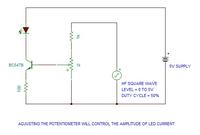simbaliya
Member level 4
I have been looking for detailed design guide of photoelectric sensor online, but can only found some basic design ideas. Does anyone know how to systematically design a photoelectric sensor with controllable sensitivity? Or tells me where I can find the materials to read. Appreciate if someone can help!

